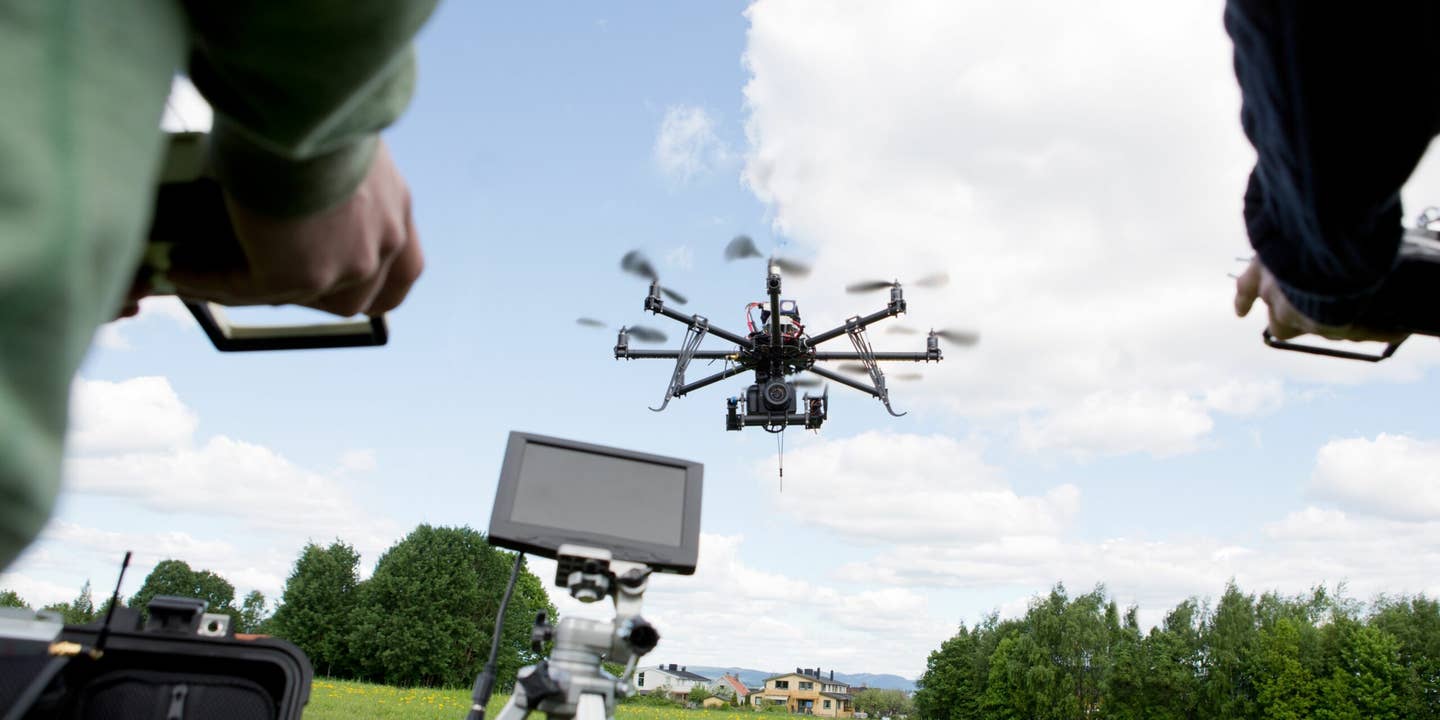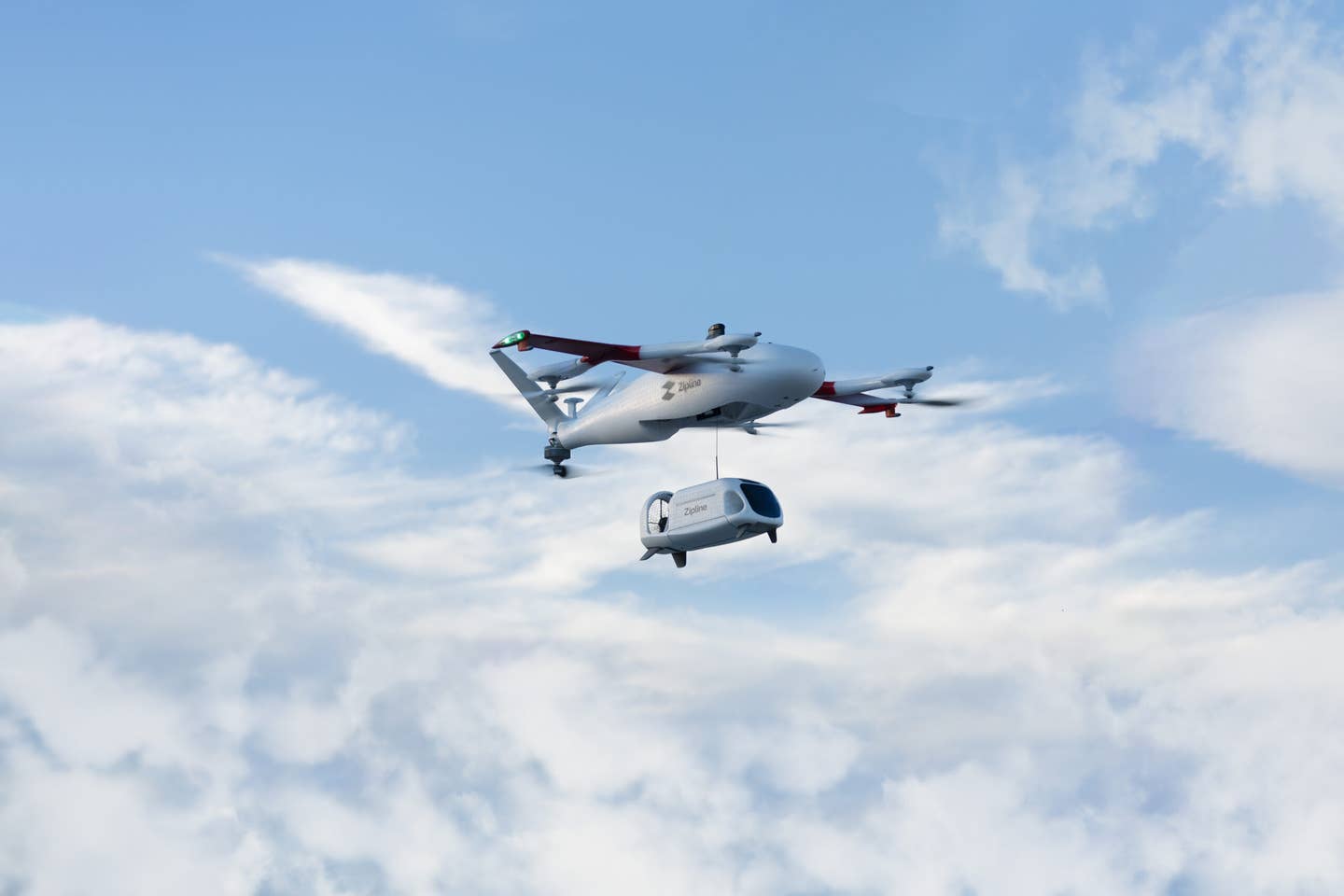
Having a Part 107 Remote Pilot Certificate, and experience operating drones, offers unmanned aircraft operators (drone pilots) many opportunities. [Credit: iStock]
Most of us hate taking tests. Aside from learning the material, there is added pressure on test day to recall the information in a limited amount of time and without any lifelines. Test day worries are enough to prevent some people from even showing up.
Thankfully, with a bit of preparation, the FAA's Part 107 exam is relatively easy to pass. With a better understanding of the structure of the test, the material the exam covers, and some sample questions, you’ll be well on your way to becoming a commercial drone pilot.
Part 107 Drone License Test: Format and Structure
It’s important to understand the structure of the test before discussing specific questions on the Part 107 exam. Anyone looking to become a UAV operator in the U.S. must pass the FAA's initial aeronautical knowledge exam, officially called the "Unmanned Aircraft General – Small (UAG)."
The test consists of 60 multiple-choice questions, each with three possible answers. Applicants have two hours to complete it and cannot bring any notes into the testing area. The test is graded as pass/fail, with a passing score of 70 percent or above, meaning you must answer at least 42 questions correctly.
Types of Part 107 Certification Questions
There are five categories of questions. The FAA provides percent ranges for each category, signifying how many of the 60 questions are in each section. It's important to note that there are several versions of the exam, and questions for each category are mixed together rather than separated into their own sections.
- Regulations: 15 to 25 percent
- Airspace and requirements: 15 to 25 percent
- Weather: 11 to 16 percent
- Loading and performance: 7 to 11 percent
- Operations: 35 to 45 percent
FAA Part 107 Test Cost
The cost of the Part 107 exam is $175, which you pay to the testing center when you schedule a date, time, and location for the exam. The FAA provides detailed lists of the Airman Certification Standards for the exam free of charge.
Common Part 107 Test Questions
The FAA provides sample questions, so you know what to expect when taking the exam. We’ll list two of these sample questions in each section and provide you with the correct response for each.
A pro tip is to utilize an FAA Part 107 practice test. Courses like those offered by Altitude University, The Pilot Institute and Sporty's, for instance, include several graded practice exams and quizzes.
Regulations
The regulations category covers the basics of Part 107 rules. There are six tasks listed under the category.
- General: This task includes topics such as accident reporting and demonstration of compliance with Part 107 rules.
- Operating rules: In this task, you’ll find questions related to alcohol use, altitude limitations, and best practices for flying safely.
- Remote Pilot Certification with an sUAS rating: Eligibility requirements and the consequences for failing to submit to a drug test are listed here.
- Waivers: Here, you must demonstrate an understanding of the waiver policy.
- Operations over people: Questions related to this task will focus on flights over people and moving vehicles.
- Remote identification (RID): Test-takers can expect questions about broadcasting requirements and product labeling.
Example question No. 1:
According to 14 CFR Part 107, how may a remote pilot operate an unmanned aircraft in Class C airspace?
A. The remote pilot must have prior authorization from the Air Traffic Control (ATC) facility having jurisdiction over that airspace.
B. The remote pilot must monitor the Air Traffic Control (ATC) frequency from launch to recovery.
C. The remote pilot must contact the Air Traffic Control (ATC) facility after launching the unmanned aircraft.
Correct answer: A
Example question No. 2:
Which technique should a remote pilot use to scan for traffic?
A. Systematically focus on different segments of the sky for short intervals.
B. Concentrate on relative movement detected in the peripheral vision area.
C. Continuously scan the sky from right to left.
Correct answer: A
Airspace and Requirements
The Airspace and Requirements section is among the most challenging for many test-takers. Commercial drone pilots must understand how to read sectional charts (the complicated-looking maps pilots use) to pass.
There are two tasks within this category:
- Airspace classification: This task covers questions about the various types of airspace (A, B, C, D, E, G, etc.).
- Airspace operational requirements: Questions include operations near airports and potential flight hazards.
Example question No. 1:
According to 14 CFR Part 107, the remote pilot in command (PIC) of a small unmanned aircraft planning to operate within Class C airspace:
A. Must use a visual observer
B. Is required to file a flight plan
C. Is required to receive ATC authorization
Correct answer: C
Example question No. 2:
Your surveying company is a title sponsor for a race team at the Indianapolis 500. To promote your new aerial surveying department, you decide to video part of the race using a small UA. The FAA has issued a Temporary Flight Restriction (TFR) for the race in the area you plan to fly. In this situation:
A. You may fly your drone in the TFR since your company is sponsoring a team at the race.
B. The TFR applies to all aircraft; you may not fly in the area without a Certificate of Waiver or Authorization.
C. Flying your drone is allowed if you notify all non-participating people of the closed course UA operation.
Correct answer: B
Weather
As you have probably guessed, the weather section is about just that. It consists of two tasks:
- Sources of weather: Here, you’ll find questions about what causes certain phenomena, such as fog and thunderstorms. You will also need to be able to read weather reports known as METARs and TAFs.
- Effects of weather on performance: The questions under this task will test your understanding of how factors such as altitude density affect the performance of your drone.
Example question No. 1:
What are the characteristics of stable air?
A. Good visibility and steady precipitation
B. Poor visibility and steady precipitation
C. Poor visibility and intermittent precipitation
Correct answer: B
Example question No. 2:
What effect does high density altitude have on the efficiency of a UA propeller?
A. Propeller efficiency is increased.
B. Propeller efficiency is decreased.
C. Density altitude does not affect propeller efficiency.
Correct answer: B
Loading and Performance
In this category, a pilot demonstrates their understanding of how changes to an aircraft affect performance. Adding weight, for example, can significantly alter the performance of a drone.
There is only one task. You should expect to see questions that show you understand what happens when you change an aircraft's balance, stability, and center of gravity.
Example question No. 1:
When operating an unmanned airplane, the remote pilot should consider that the load factor on the wings may be increased any time that the:
A. CG is shifted rearward to the aft CG limit.
B. airplane is subjected to maneuvers other than straight-and-level flight.
C. gross weight is reduced.
Correct answer: B
Example question No. 2:
A stall occurs when the smooth airflow over the unmanned airplane’s wing is disrupted and the lift degenerates rapidly. This is caused when the wing exceeds:
A. the maximum speed.
B. the maximum allowable operating weight.
C. its critical angle of attack.
Correct answer: C
Operations
The final category of test questions covers all the remaining topics, from radio procedures to aeronautical decision-making. The operations category has six tasks:
- Radio communications procedures: The phonetic alphabet, airplane call signs, and common radio channels are covered here.
- Airport operations: Prospective pilots must show their understanding of traffic patterns used by manned aircraft pilots, runway markings and signage, and the sources for airport data.
- Emergency procedures: The unexpected can occur, and the FAA wants to ensure drone pilots know what to do in emergencies.
- Aeronautical decision-making: Questions in this section cover crew resource management and hazardous attitudes.
- Physiology: Your physical and mental well-being can affect your abilities as a UAV operator. You’ll need to demonstrate how stress, illness, and medications affect you.
- Maintenance and inspection procedures: As a commercial drone pilot, you’re responsible for the condition of your drone. This section explains your responsibilities regarding inspecting a drone before flight and operating it once it takes off.
Example question No. 1:
To avoid a possible collision with a manned airplane, you estimate that your small UA climbed to an altitude greater than 600 feet agl. To whom must you report the deviation?
A. Air Traffic Control
B. National Transportation Safety Board
C. upon request of the FAA
Correct answer: C
Example question No. 2:
According to 14 CFR Part 107, the responsibility to inspect the small UAS to ensure it is in a safe operating condition rests with the:
A. remote pilot in command
B. visual observer
C. owner of the small UAS
Correct answer: A
Part 107 Test Prep Strategies
When studying for the Part 107 test, prospective UAV operators should use a combination of the FAA's study guide and online Part 107 courses. Combining these resources will help provide structure as you learn the material. Most students benefit from these self-paced courses, which include graded quizzes, tests, and flashcards.
Dedicate at least an hour a day to whatever program you choose. At that rate, most students are ready for the test in two to three weeks, if not sooner. It is important to remember to learn the concepts and not just memorize answers to questions, as there are several versions of the test. Get a good night's sleep before the test and enter the test center with confidence.
Get Started with These Part 107 Test Questions
Now that you understand the test's format and have a feel for the questions on the exam, you're ready to begin studying.
Online courses such as those offered by Altitude University and The Pilot Institute are among the best places to start, and they boast over a 99 percent success rate for their students passing the exam on the first try. Also make sure to check out our guide for Part 107 test prep. Study hard using these resources and begin your journey as a commercial drone pilot.
FAQ
Is the Part 107 test open book?
No. You are not allowed to bring any kind of notes to the exam. The testing center will provide a calculator, test booklet, pencil, and scrap paper. You will answer the questions on a computer.
How long does it take to study for the Part 107 test?
It depends on the individual. Some people can learn the material in a day or two, while others take several months. If you study an hour a day, the average student is ready in two to three weeks.
Can I take my Part 107 test online?
No. The first time you take the Part 107 exam, you must be in person. All recurrent exams are online.

Sign-up for newsletters & special offers!
Get the latest FLYING stories & special offers delivered directly to your inbox






